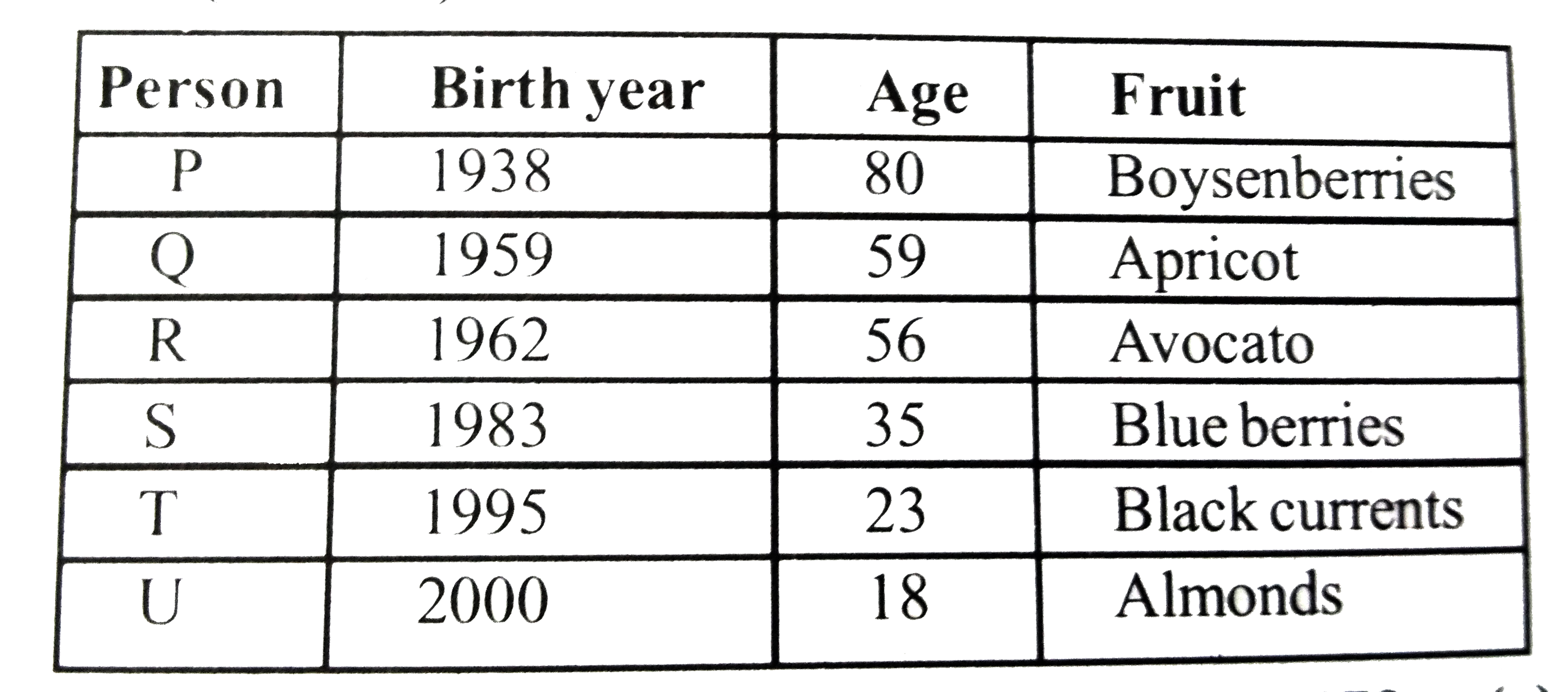Explore topic-wise InterviewSolutions in .
This section includes InterviewSolutions, each offering curated multiple-choice questions to sharpen your knowledge and support exam preparation. Choose a topic below to get started.
| 601. |
Twelve people are sitting in two parallel rows containing six people each such that they are equidistant from each other. In row 1: P,Q,R, S, T and V are seated and all of them are facing South. In row 2: A, B, C, D, E and F are seated and all of them are facing North. Therefore, in the given seating arrangement, each member seated in a row faces another member of the other row. S sits third to the right of Q. Either S or Qsits at an extreme end of the line. The one who faces Q Sits second to the right of E. Two people sit between B and F. Neither B nor F sits at an extreme end of the line. The immediate neighbour of B faces the person who sits third to the left of P. R and T are immediate neighbours. C sits second to the left of A. T does not face the immediate neighbour of D.How many persons are seated between V and R ? |
Answer» Solution :
|
|
| 602. |
Twelve people are sitting in two parallel rows containing six people each such that they are equidistant from each other. In row 1: P,Q,R, S, T and V are seated and all of them are facing South. In row 2: A, B, C, D, E and F are seated and all of them are facing North. Therefore, in the given seating arrangement, each member seated in a row faces another member of the other row. S sits third to the right of Q. Either S or Qsits at an extreme end of the line. The one who faces Sits second to the right of E. Two people sit between B and F. Neither B nor F sits at an extreme end of the line. The immediate neighbour of B faces the person who sits third to the left of P. R and T are immediate neighbours. C sits second to the left of A. T does not face the immediate neighbour of D. Who amongst the following faces S ? |
|
Answer» A 
|
|
| 603. |
Twelve people are sitting in two parallel rows containing six people each such that they are equidistant from each other. In row 1: P,Q,R, S, T and V are seated and all of them are facing South. In row 2: A, B, C, D, E and F are seated and all of them are facing North. Therefore, in the given seating arrangement, each member seated in a row faces another member of the other row. S sits third to the right of Q. Either S or Qsits at an extreme end of the line. The one who faces Q Sits second to the right of E. Two people sit between B and F. Neither B nor F sits at an extreme end of the line. The immediate neighbour of B faces the person who sits third to the left of P. R and T are immediate neighbours. C sits second to the left of A. T does not face the immediate neighbour of D.Which of the following is true regarding T ? |
|
Answer» F faces T 
|
|
| 604. |
Twelve people are sitting in two parallel rows containing six people each such that they are equidistant from each other. In row 1: P,Q,R, S, T and V are seated and all of them are facing South. In row 2: A, B, C, D, E and F are seated and all of them are facing North. Therefore, in the given seating arrangement, each member seated in a row faces another member of the other row. S sits third to the right of Q. Either S or Qsits at an extreme end of the line. The one who faces Q Sits second to the right of E. Two people sit between B and F. Neither B nor F sits at an extreme end of the line. The immediate neighbour of B faces the person who sits third to the left of P. R and T are immediate neighbours. C sits second to the left of A. T does not face the immediate neighbour of D.P is related to A in the same way as S is related to B based on the given arrangement. Which of the following is T related to , followingthe same pattern ? |
|
Answer» C 
|
|
| 605. |
Six person sits around a triangular table such that three of them sit at the corners and the rest on the middle of the side. The one who sits at the corner face away from the centre and the one who sit at the middle of the side face towards the centre. they also like different cars i.e. Hatch back, Sedan , MPV,SUV, Crossover and Coupe. The one who likes Hatch back sits at the corner. the one who likes Coupe sits immediate right to the one who likes crossover. O sits 2^(nd) right to N, who likes MPV. P faces the centre and sits 3^(rd) right to one who likes SUV. Q sits immediate right to P.R sits at one of the corner but does not like SUV and coupe. M is one of the person . Q does not like crossover and hatch back. Who among the following likes crossover. ? |
|
Answer» (i) R 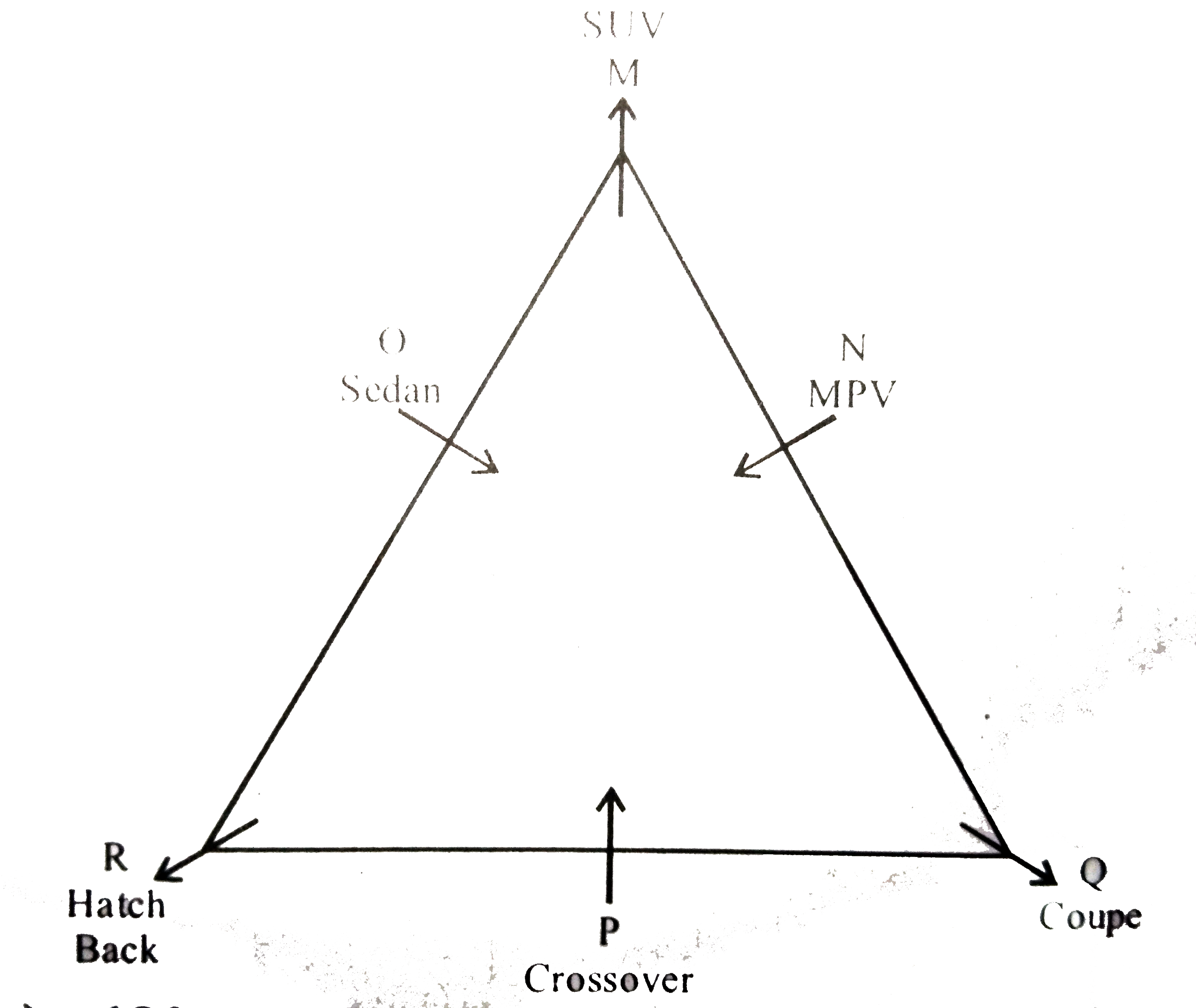
|
|
| 606. |
Six person sits around a triangular table such that three of them sit at the corners and the rest on the middle of the side. . The one who sits at the corner face away from the centre and the one who sit at the middle of the side face towards the centre. they also like different cars i.e. Hatch back, Sedan , MPV,SUV, Crossover and Coupe. The one who likes Hatch back sits at the corner. the one who likes Coupe sits immediate right to the one who likes crossover. O sits 2^(nd) right to N, who likes MPV. P faces the centre and sits 3^(rd) right to one who likes SUV. Q sits immediate right to P.R sits at one of the corner but does not like SUV and coupe. M is one of the person . Q does not like crossover and hatch back. Who among the following sits 2^(nd) to the right of the one who is 3^(rd) left o M ? |
Answer» Solution :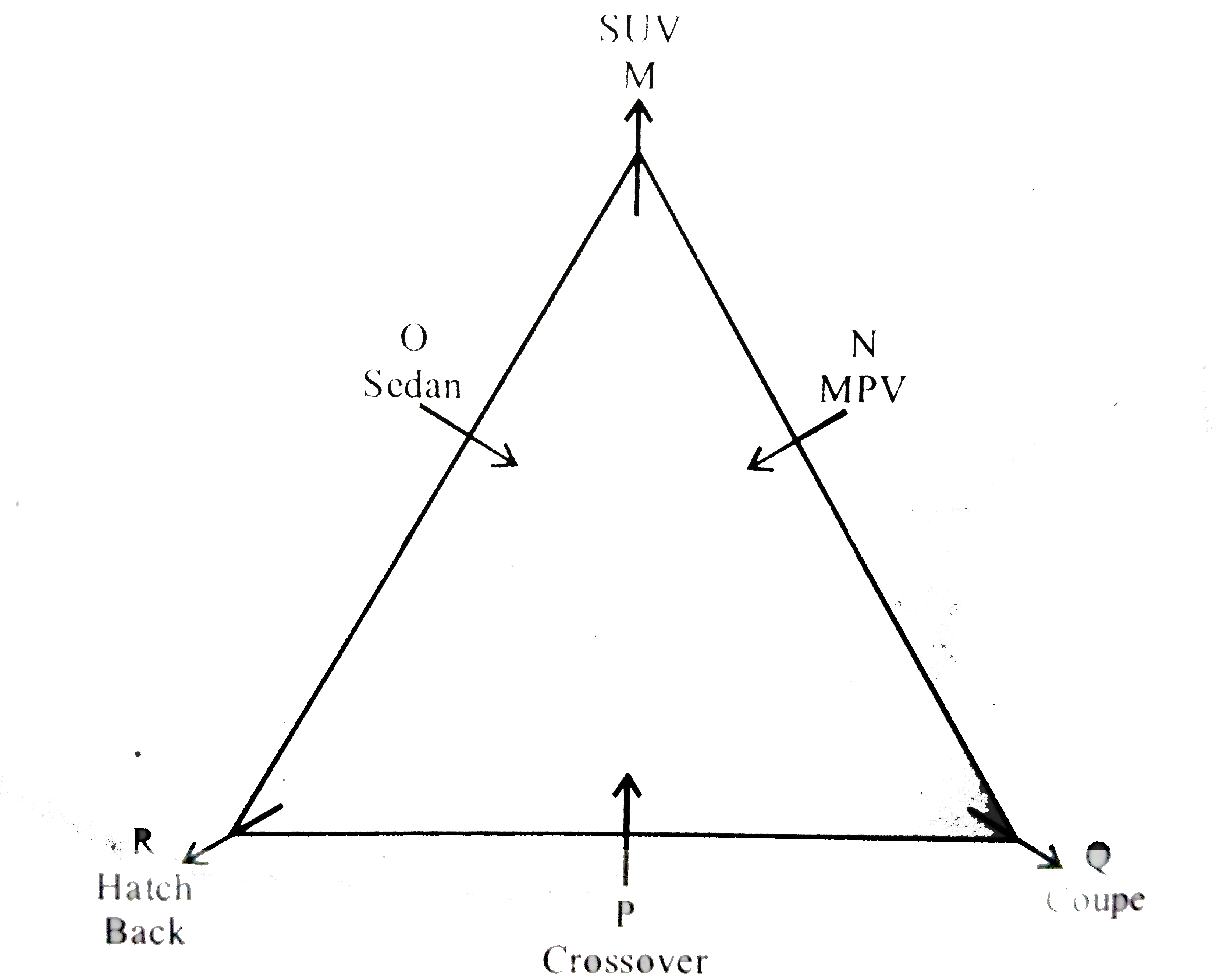
|
|
| 607. |
Twelve people are sitting in two parallel rows containing six people each such that they are equidistant from each other. In row 1: P,Q,R, S, T and V are seated and all of them are facing South. In row 2: A, B, C, D, E and F are seated and all of them are facing North. Therefore, in the given seating arrangement, each member seated in a row faces another member of the other row. S sits third to the right of Q. Either S or Qsits at an extreme end of the line. The one who faces Sits second to the right of E. Two people sit between B and F. Neither B nor F sits at an extreme end of the line. The immediate neighbour of B faces the person who sits third to the left of P. R and T are immediate neighbours. C sits second to the left of A. T does not face the immediate neighbour of D. Who amongst the following sit at the extreme ends of the rows ? |
|
Answer» S,D 
|
|
| 608. |
If 'P$Q', means 'P is father of Q ','P#Q' means 'P is mother of Q', 'P**Q' means 'P is sister of Q ', then how is D related to N in N#A$B*D ? |
|
Answer» Nephew 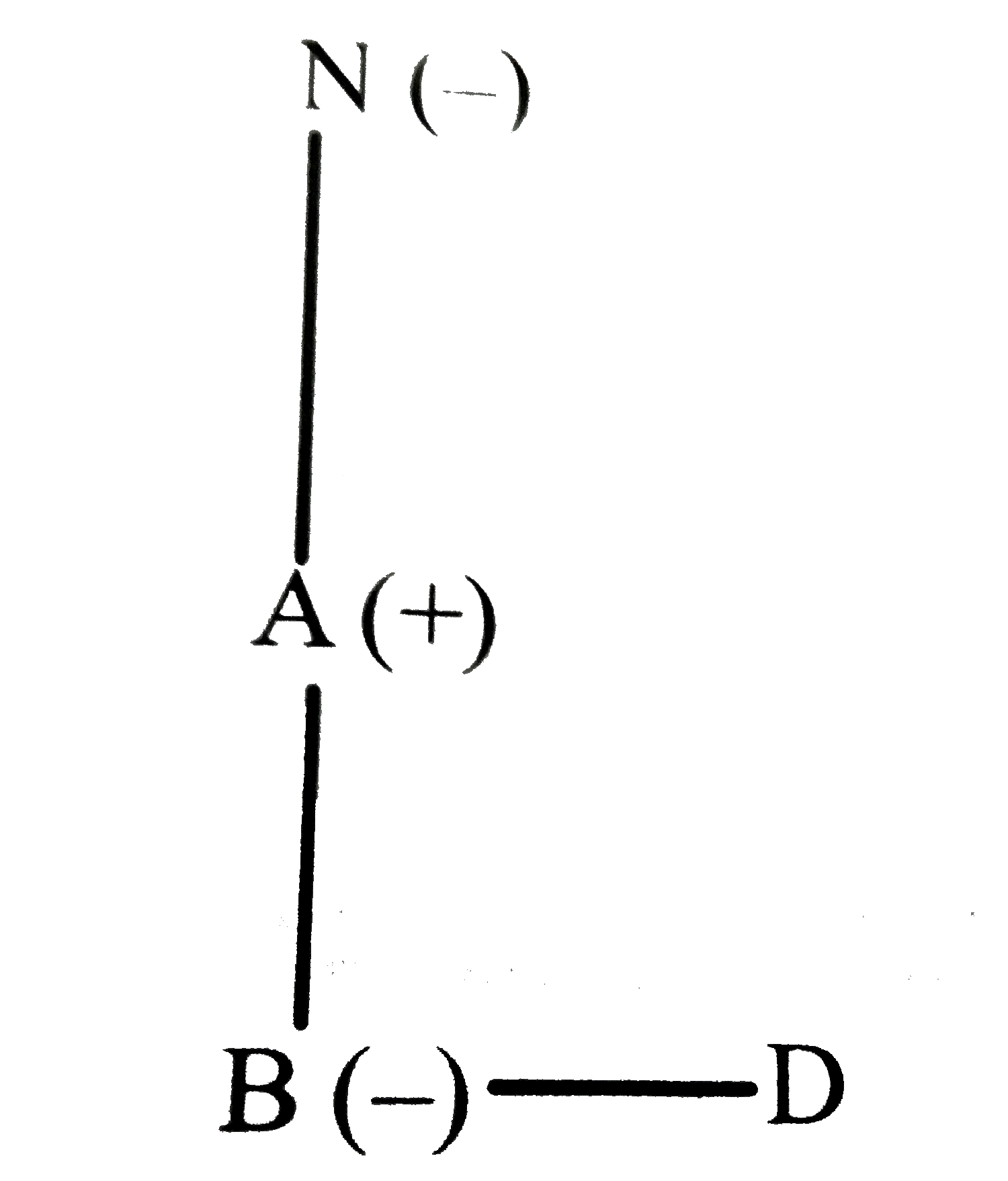 DATA is not SUFFICIENT . So can't be determined. |
|
| 609. |
If 'A$B' mean 'A is father of B','A#B' means 'A daughterof B','A@B' means 'A is sister of B , then how is K relatedto M in H@K$L#M? |
|
Answer» Husband 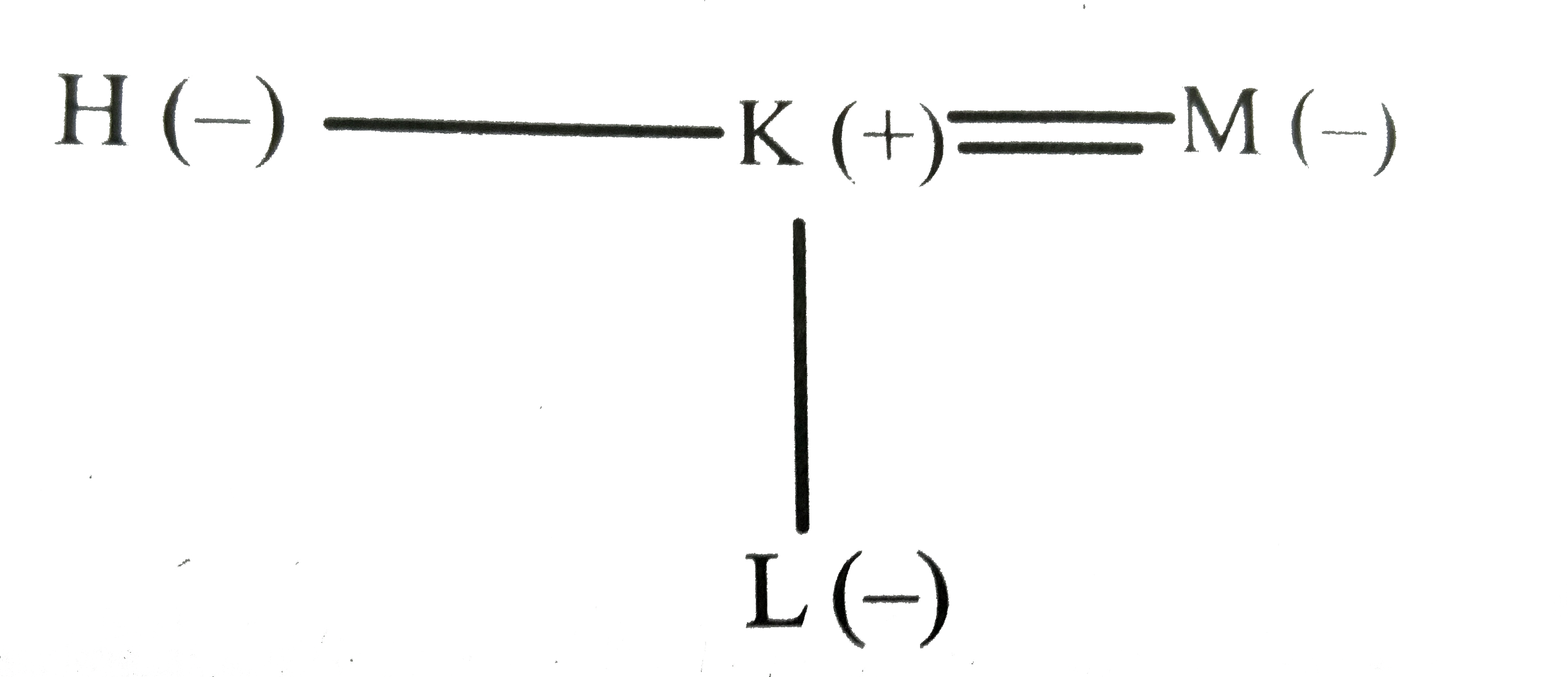 So, K is husband of M |
|
| 610. |
D is the sister of E. A is the father of D . F is the sonof E. C is the maternal grandfather of V. A does not have married daughter ? If B is married to E, then how is B related to A ? |
|
Answer» GRANDSON 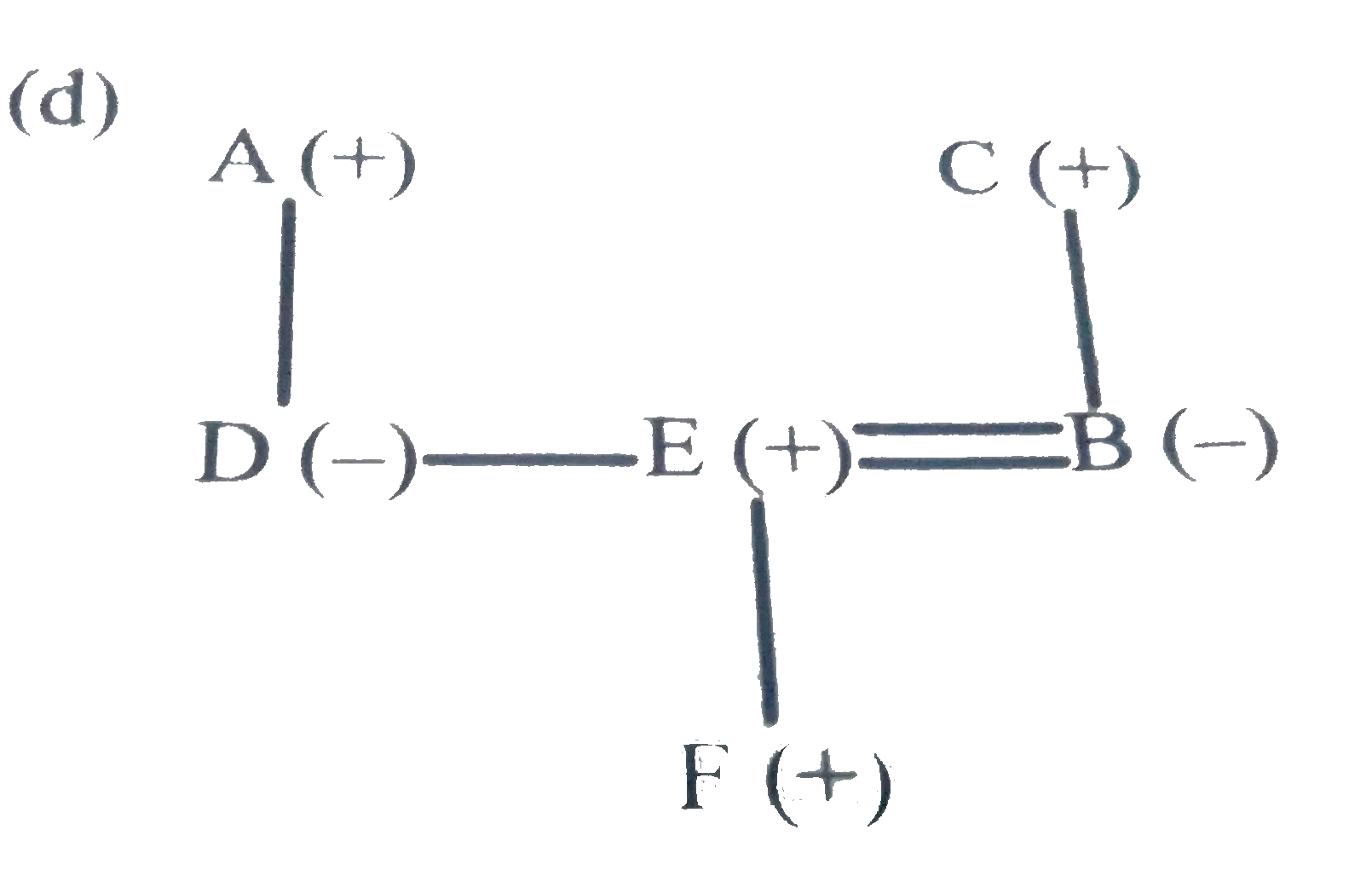
|
|
| 611. |
D is the sister of E. A is the father of D . F is the sonof E. C is the maternal grandfather of V. A does not have married daughter ? How isD related to F ? |
|
Answer» Uncle 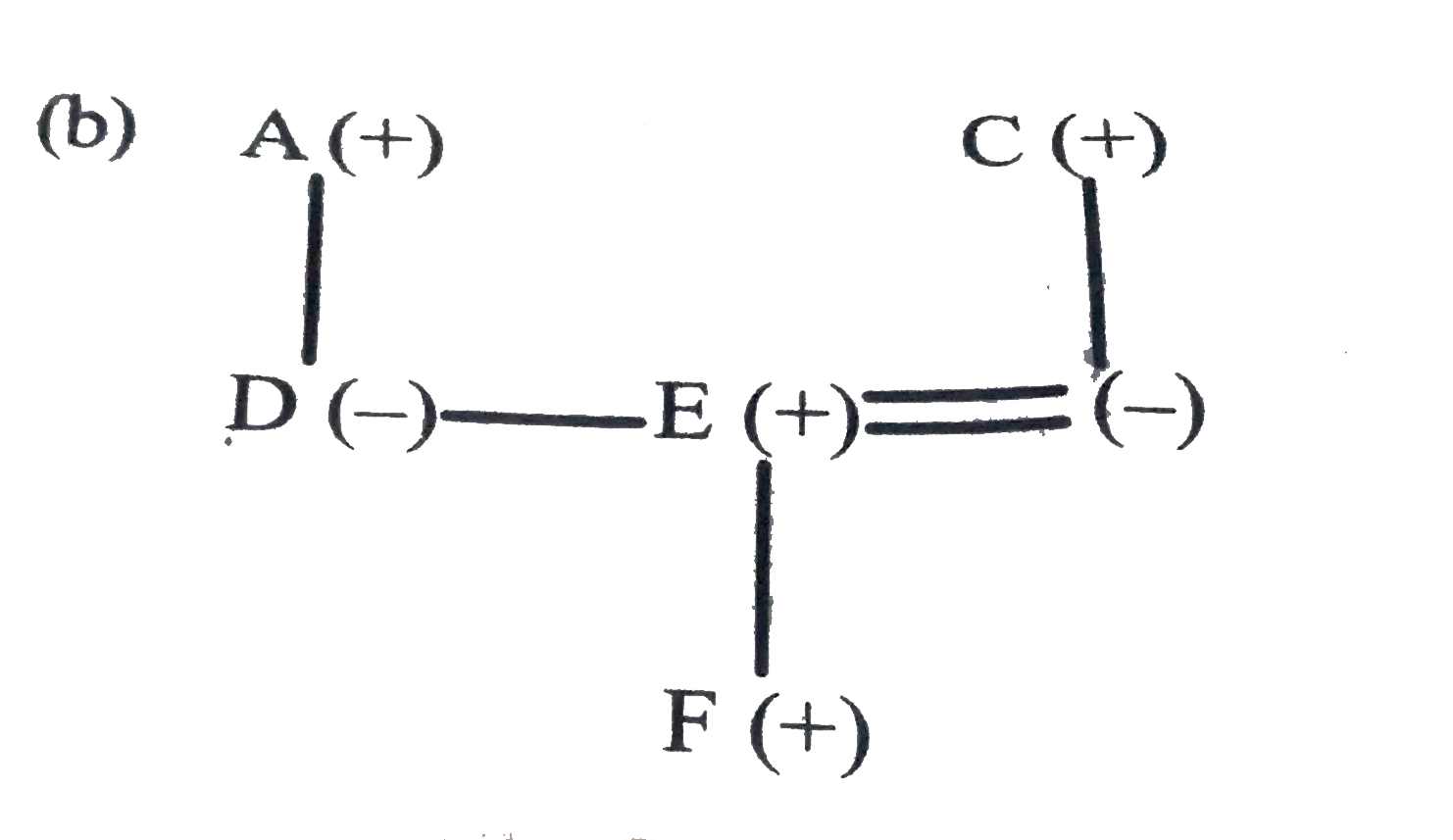
|
|
| 612. |
Six people, S,R,U,T,Q and P are born in different years with the current base is taken as 2018. none of them is older than 90 years old. They like different fruits almonds, blue berries, apricot, avocato, black currents, boysen berries. Note- the last two digits or reverse of the last two digits of the year in which a person is born can be the age of some other person. (like A is born in 1943 and age of B is denoted by the last two digits of the birth year of A. then B's age will be either 34 or 43). S was born in the year 1983. the difference of age between S and R is 21 years. U age is sum of the digits of the year in which R was born. the one who likes black currents is 5 years elder to U. Q age is either the last two digit or reverse of the last two digits of the year in which the person who likes black currents was born. only one person is elder to Q and U likes almonds. the one likes avocato is jsut younger to Q. the difference between P's and the one who likes avocato is 24 years. The one who likes boysen berries was born in an even year. The one who likes blue berries is younger to the one who likes apricot both in odd number of years. T is younger than P. In which of the following year T was born ? |
|
Answer» 2002 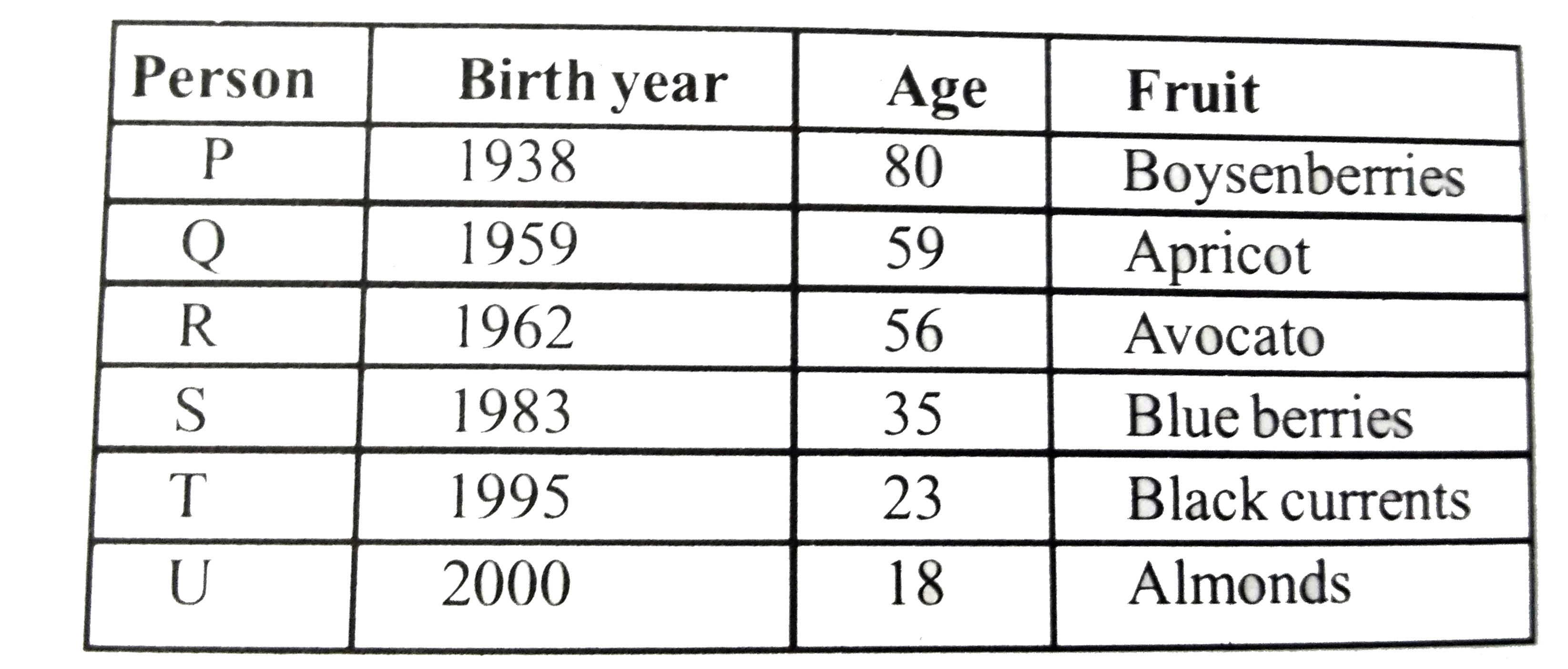
|
|
| 613. |
Six people, S,R,U,T,Q and P are born in different years with the current base is taken as 2018. none of them is older than 90 years old. They like different fruits almonds, blue berries, apricot, avocato, black currents, boysen berries. Note- the last two digits or reverse of the last two digits of the year in which a person is born can be the age of some other person. (like A is born in 1943 and age of B is denoted by the last two digits of the birth year of A. then B's age will be either 34 or 43). S was born in the year 1983. the difference of age between S and R is 21 years. U age is sum of the digits of the year in which R was born. the one who likes black currents is 5 years elder to U. Q age is either the last two digit or reverse of the last two digits of the year in which the person who likes black currents was born. only one person is elder to Q and U likes almonds. the one likes avocato is jsut younger to Q. the difference between P's and the one who likes avocato is 24 years. The one who likes boysen berries was born in an even year. The one who likes blue berries is younger to the one who likes apricot both in odd number of years. T is younger than P. Which of the following statement is correct ? |
|
Answer» T is THREE YEARS OLDER than the one who likes avocato 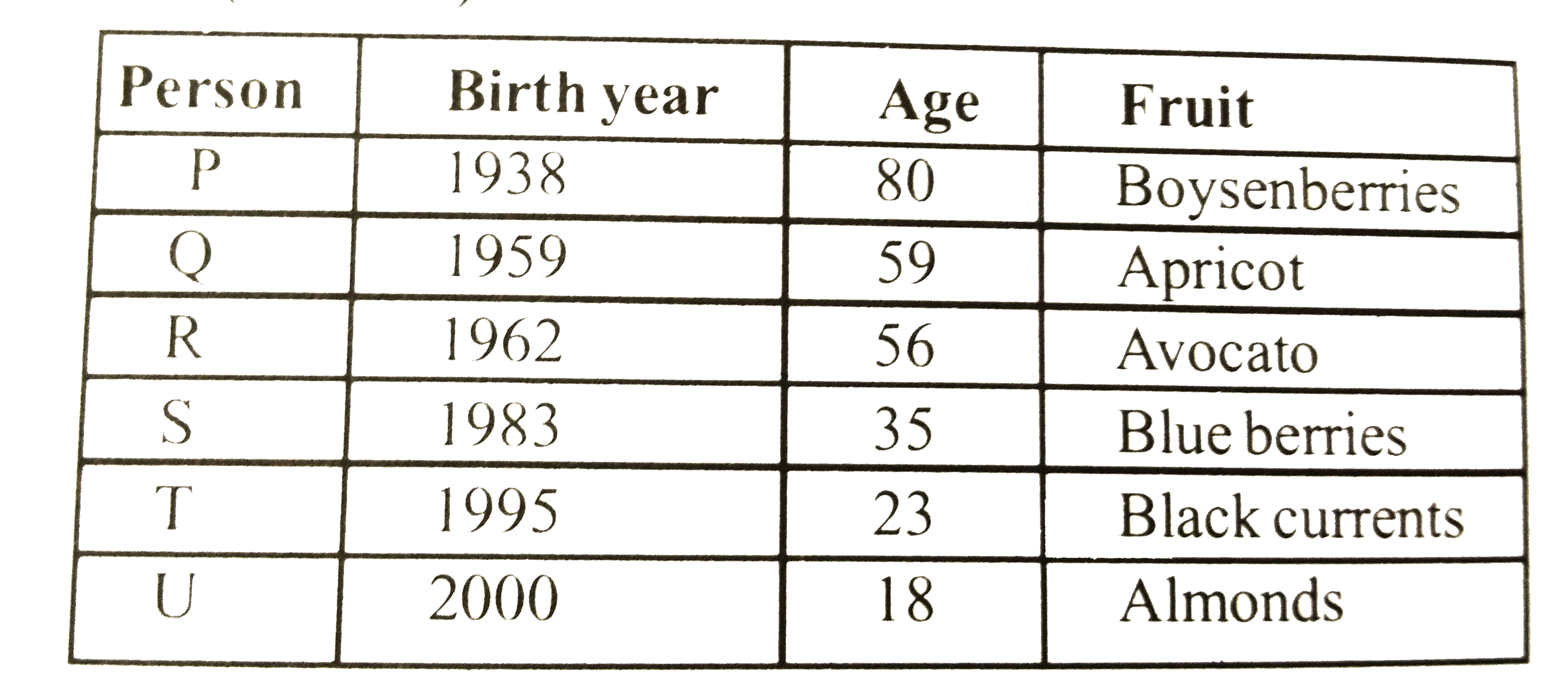
|
|
| 614. |
Six people, S,R,U,T,Q and P are born in different years with the current base is taken as 2018. none of them is older than 90 years old. They like different fruits almonds, blue berries, apricot, avocato, black currents, boysen berries. Note- the last two digits or reverse of the last two digits of the year in which a person is born can be the age of some other person. (like A is born in 1943 and age of B is denoted by the last two digits of the birth year of A. then B's age will be either 34 or 43). S was born in the year 1983. the difference of age between S and R is 21 years. U age is sum of the digits of the year in which R was born. the one who likes black currents is 5 years elder to U. Q age is either the last two digit or reverse of the last two digits of the year in which the person who likes black currents was born. only one person is elder to Q and U likes almonds. the one likes avocato is jsut younger to Q. the difference between P's and the one who likes avocato is 24 years. The one who likes boysen berries was born in an even year. The one who likes blue berries is younger to the one who likes apricot both in odd number of years. T is younger than P. Which of the following combination is true ? |
|
Answer» T-1983- BLACK CURRENTS 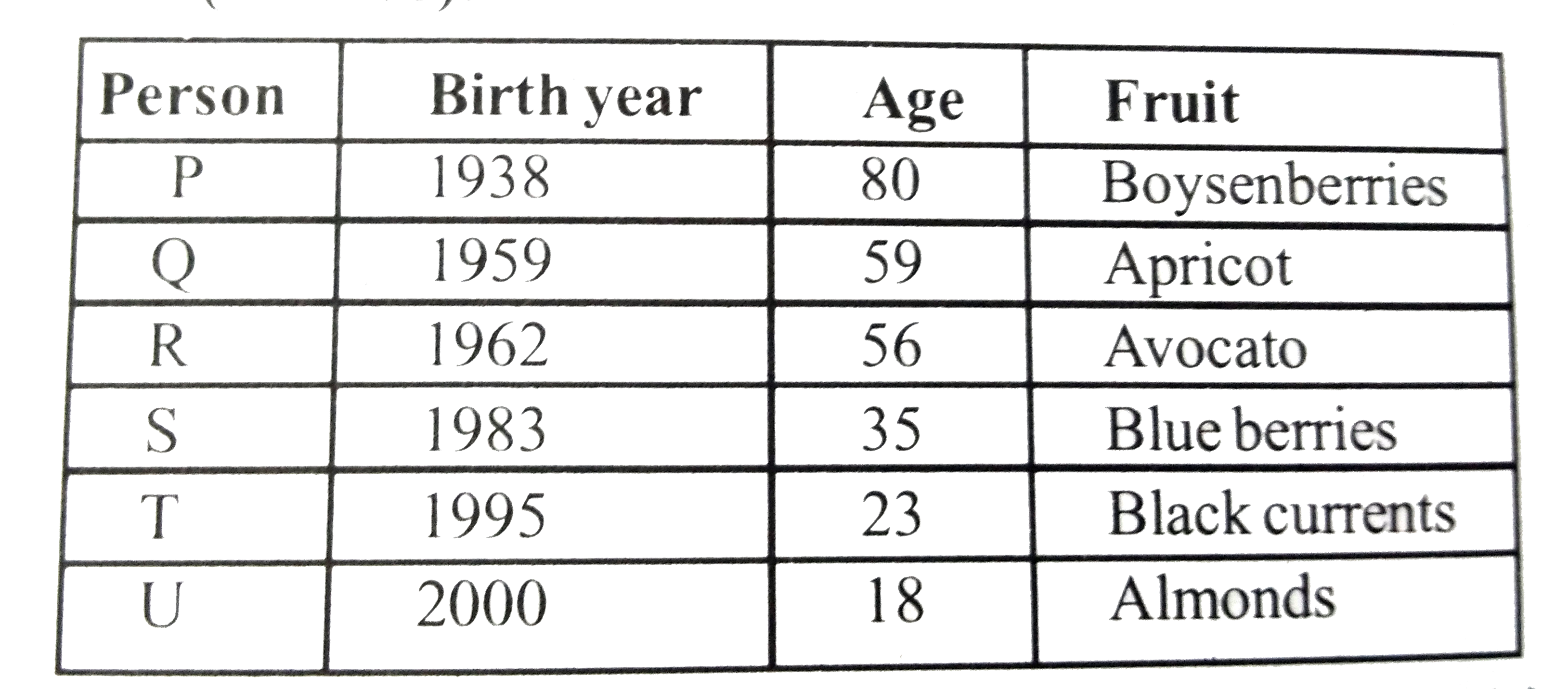
|
|
| 615. |
Six people, S,R,U,T,Q and P are born in different years with the current base is taken as 2018. none of them is older than 90 years old. They like different fruits almonds, blue berries, apricot, avocato, black currents, boysen berries. Note- the last two digits or reverse of the last two digits of the year in which a person is born can be the age of some other person. (like A is born in 1943 and age of B is denoted by the last two digits of the birth year of A. then B's age will be either 34 or 43). S was born in the year 1983. the difference of age between S and R is 21 years. U age is sum of the digits of the year in which R was born. the one who likes black currents is 5 years elder to U. Q age is either the last two digit or reverse of the last two digits of the year in which the person who likes black currents was born. only one person is elder to Q and U likes almonds. the one likes avocato is jsut younger to Q. the difference between P's and the one who likes avocato is 24 years. The one who likes boysen berries was born in an even year. The one who likes blue berries is younger to the one who likes apricot both in odd number of years. T is younger than P. Who among the following is the eldest ? |
|
Answer» Q 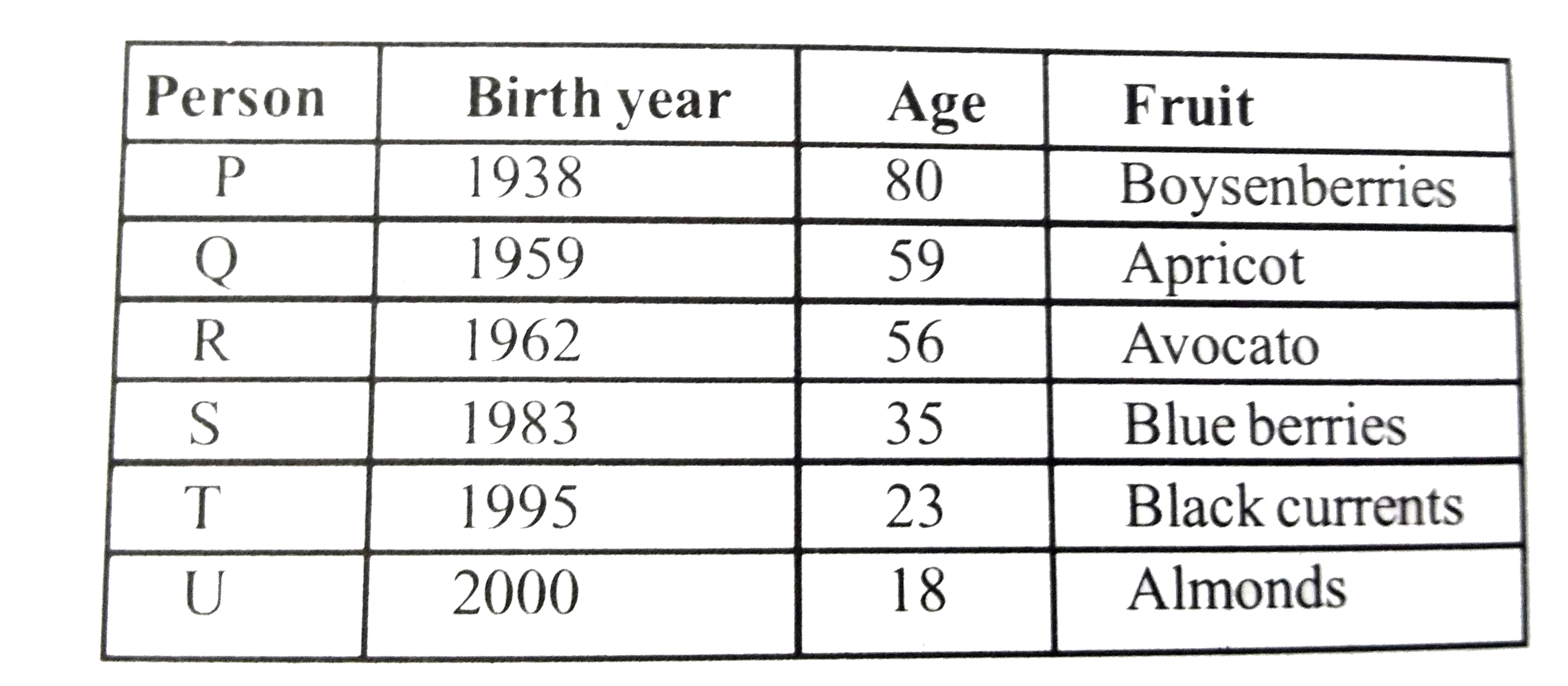
|
|
| 617. |
Statement : Although the education system has progressed from the point of view of the number of schools, most of them are ill equipped and have not achieved excellence in imparting education. Which of the following inferences can be drawn from the above statement ? (An inference is something which is not directly stated but can be inferred from the given facts). |
|
Answer» We need not open any more schools in future. |
|
| 618. |
Statements: Some tyres are bags. All bags are shirts. No shirt is a tie Conclusions: (I) All tie being tyres is a possibility II No bag is tie |
|
Answer» If only CONCLUSION I follows  So, both I and II FOLLOW |
|
| 619. |
There are six cubes A,B,C ,D,E and F which contain juices in different amount. A contains less amount of juice than E and D. C and F contains less than A but more than B. F is not the second least amount of juice. D doesn't have the maximum amount of juice. The one which has third maximum juice has 16 litres. the one which contains second least amount of juice has 9 litres. What can be the amount of juice in cube F ? |
|
Answer» RS . 2500 |
|
| 620. |
There are six boxes, S,T,U,X,Y and Z, each containing different amount of money in it. Box T has more money than Box Y but less than Box X. Only Box Z has more money than box U. Box Y does not has the least amount of money. The box containing 3^(rd) highest amount of money has Rs 3000, which is Rs 1000 more than the box which has 2^(nd) lowest amount of money. Which of the following is true regarding box X ? |
|
Answer» Only Box S has less money than Box X |
|
| 621. |
There are six boxes, S,T,U,X,Y and Z, each containing different amount of money in it. Box T has more money than Box Y but less than Box X. Only Box Z has more money than box U. Box Y does not has the least amount of money. The box containing 3^(rd) highest amount of money has Rs 3000, which is Rs 1000 more than the box which has 2^(nd) lowest amount of money. What may be the amount of money in Box T, if it has Rs . 250 less than the box X ? |
|
Answer» Rs . 2500 |
|
| 622. |
Get details or venue--- ni ko ri ja Venue book required details --- ja mo ci ko Details required book guest--- ko mo ci th Guest get more venue --- th ni xd ja What is the code for the word 'get' in the givencode language?दी गई कूट भाषा में 'get' के लिए कूट क्या है? |
Answer» SOLUTION :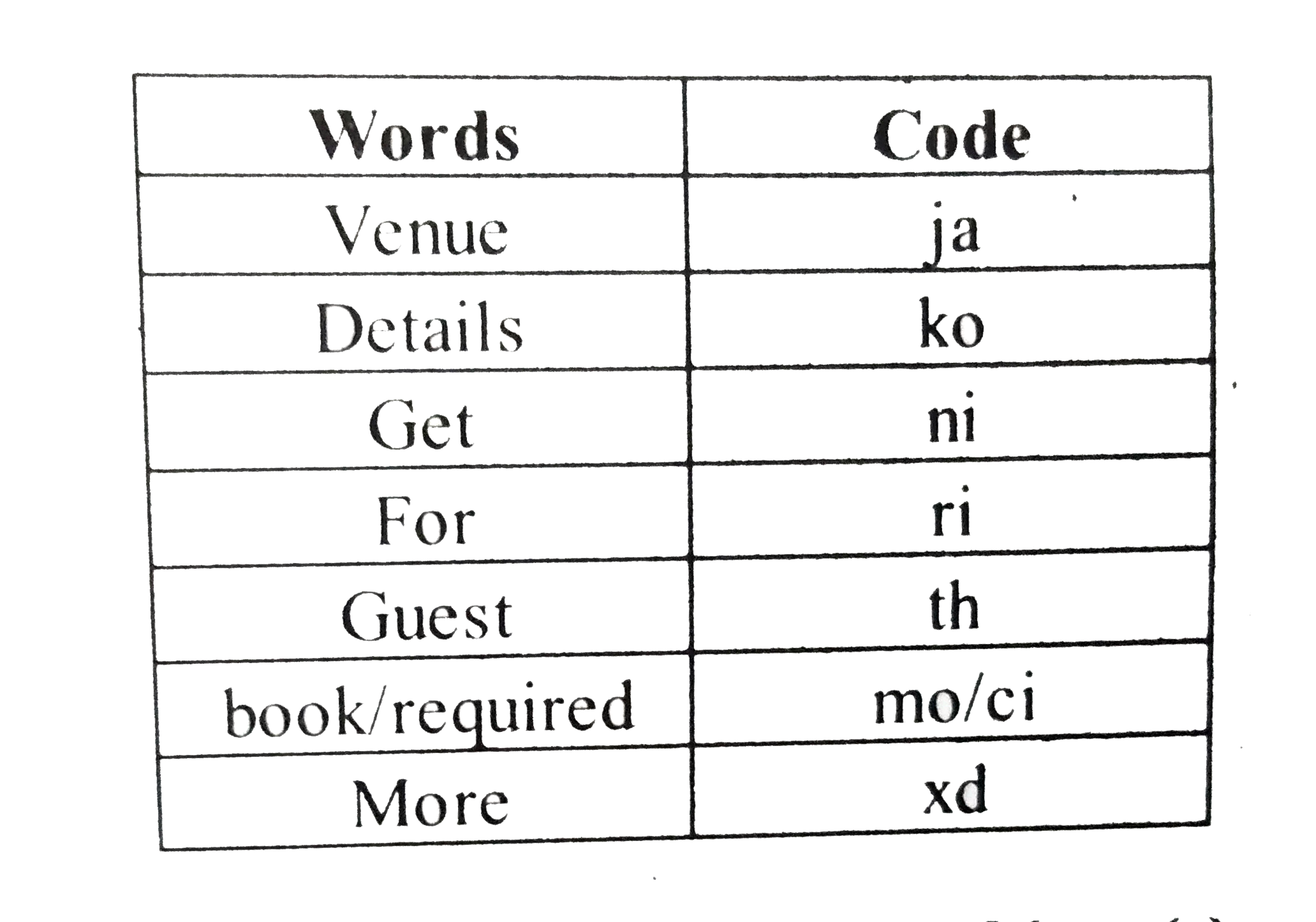
|
|
| 623. |
Get details or venue--- ni ko ri ja Venue book required details --- ja mo ci ko Details required book guest--- ko mo ci th Guest get more venue --- th ni xd ja What is the code for 'details' in the given code language? |
|
Answer» ni 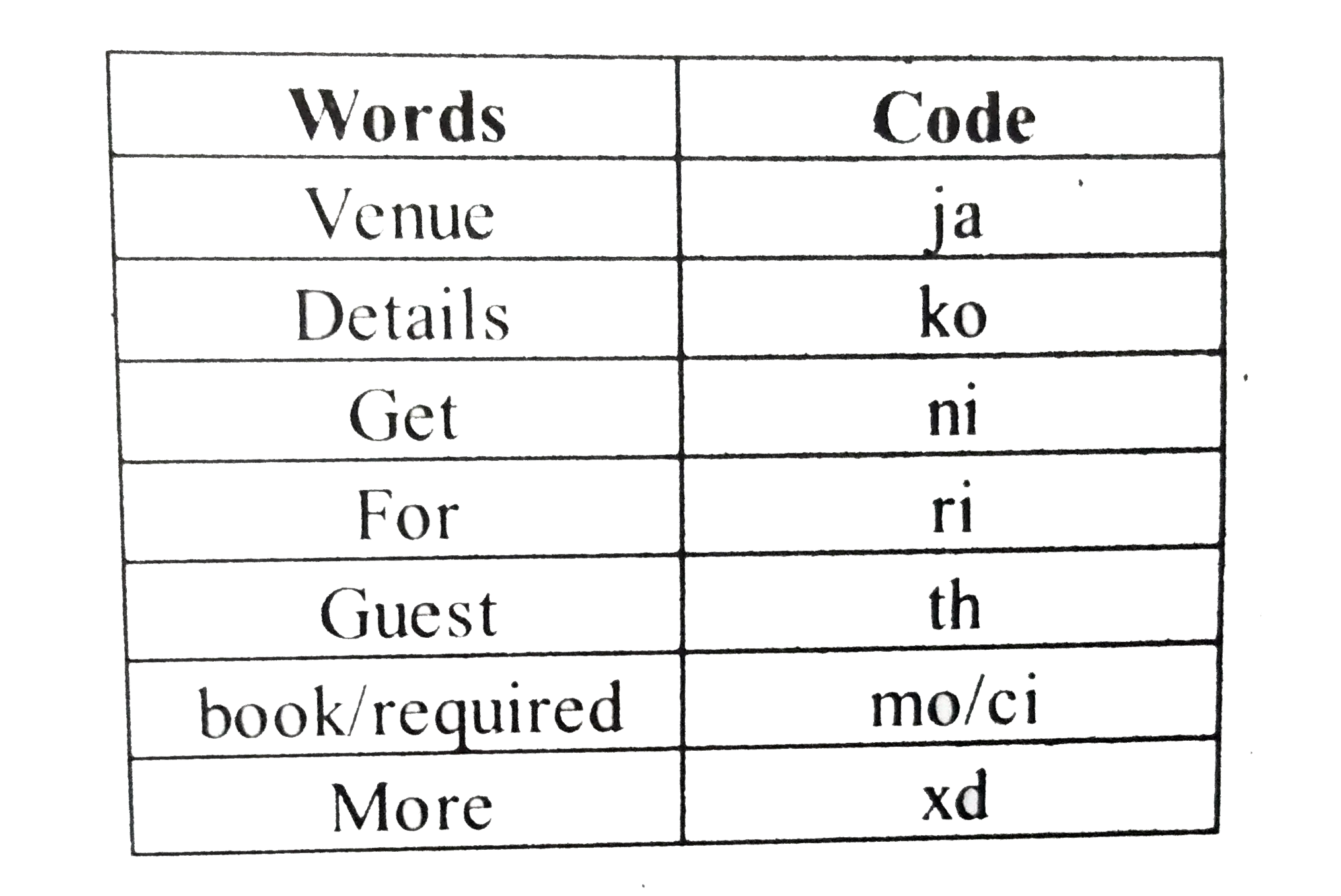
|
|
| 624. |
Get details or venue--- ni ko ri ja Venue book required details --- ja mo ci ko Details required book guest--- ko mo ci th Guest get more venue --- th ni xd ja What is the code for the word 'guest venue' in the givencode language? |
Answer» Solution :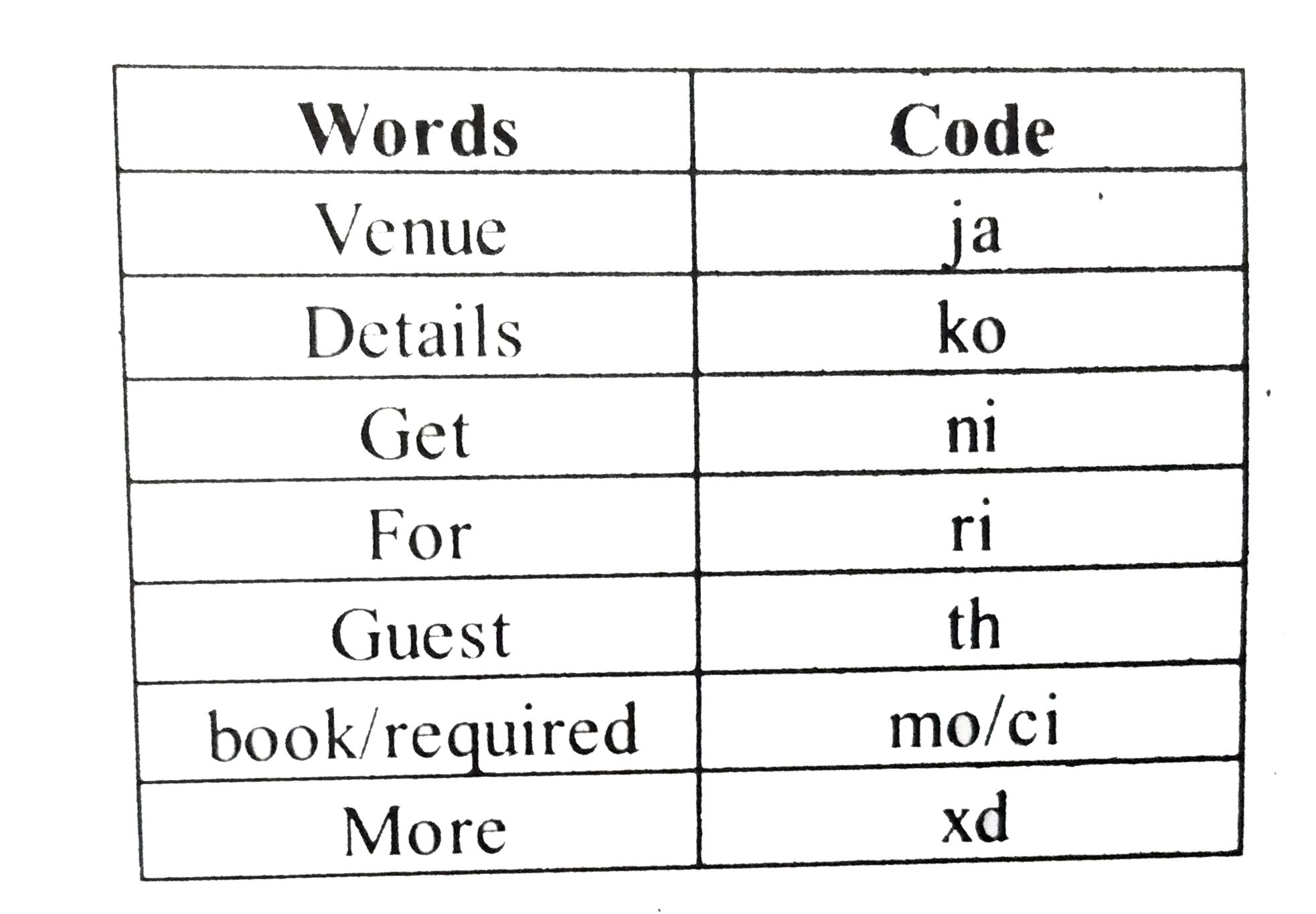
|
|
| 625. |
Get details or venue--- ni ko ri jaVenue book required details --- ja mo ci koDetails required book guest--- ko mo ci thGuest get more venue --- th ni xd jaIf the code for the words 'for_______' is coded as xd ri in the coded language then what will be the missing word? |
Answer» Solution :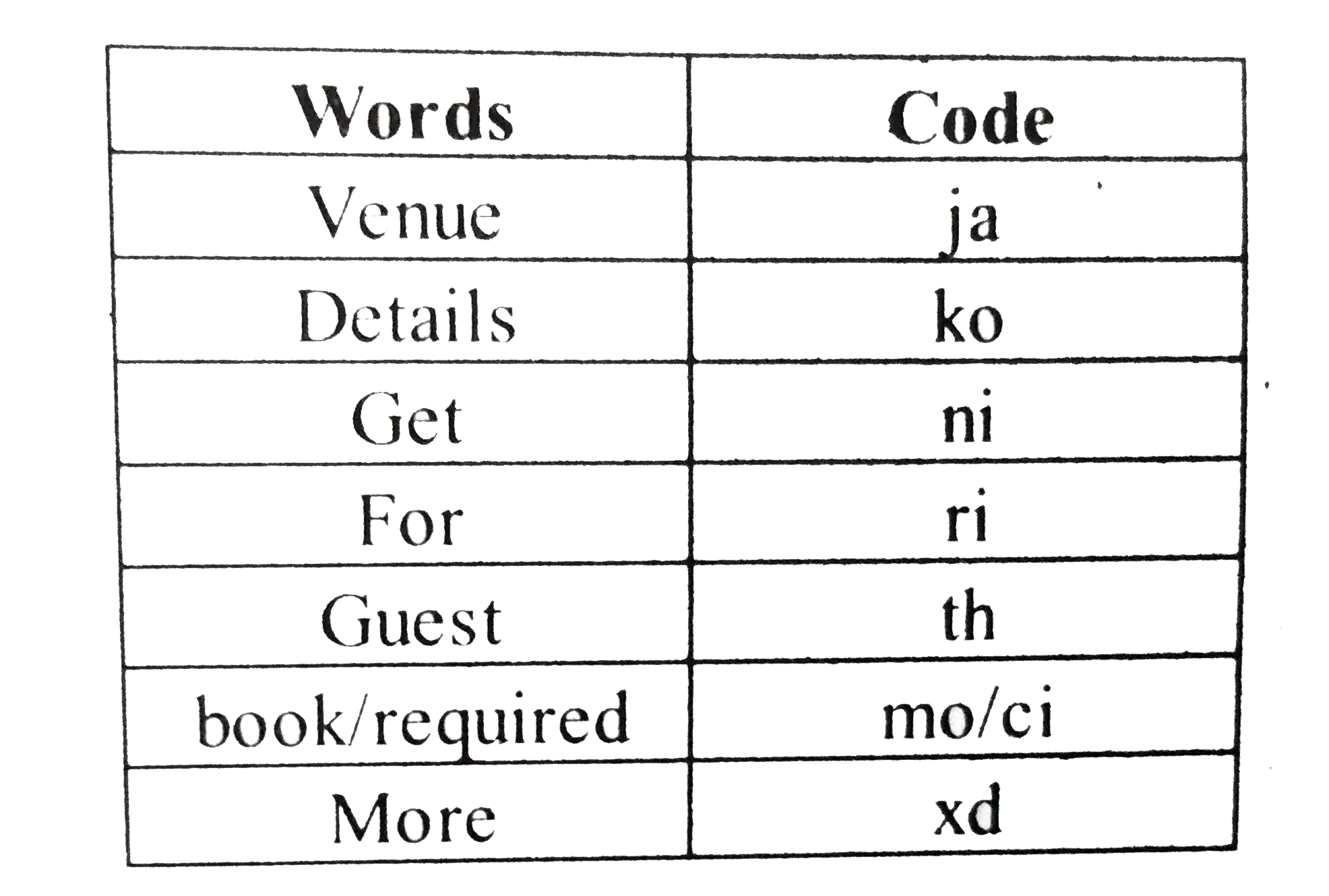
|
|
| 626. |
Y is the sister of J. L is the wife of J. L has only one son R.K is the mother of L. K is married to D. D has only one son and only daughter. If L is the sisterof B , then how is B related to J? |
|
Answer» sister-in-law 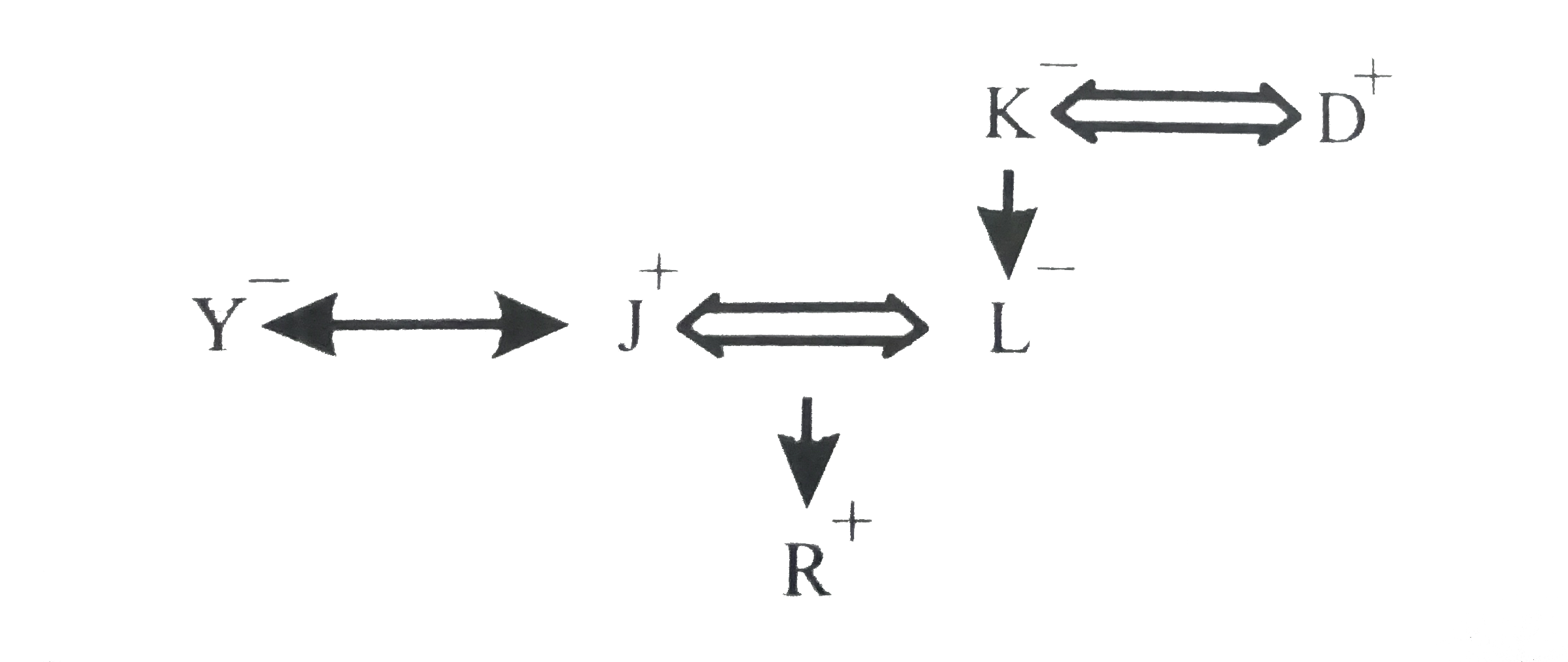 As GANDER of B is not know , THEREFORE relation of B with J cannot be determined. |
|
| 627. |
Y is the sister of J. L is the wife of J. L has only one son R.K is the mother of L. K is married to D. D has only one son and only daughter. As per the given information, how is R related to Y ? |
|
Answer» NEPHEW 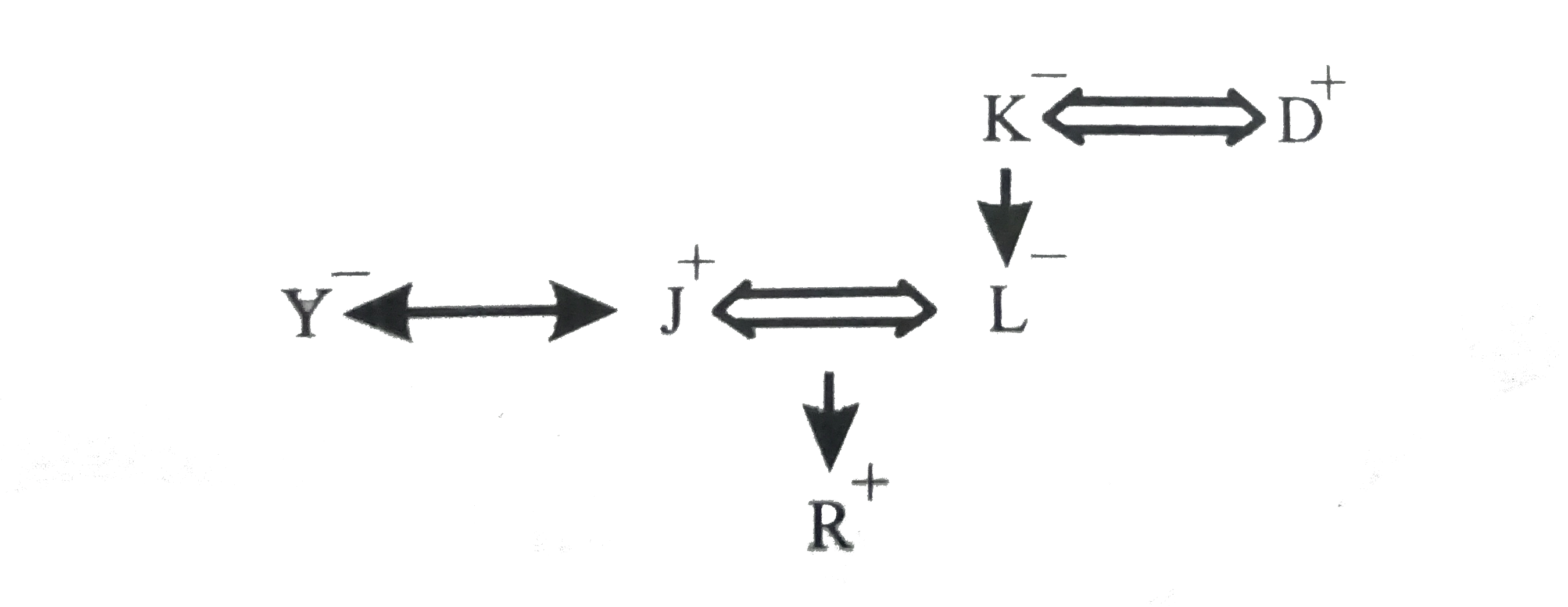 Clearly , R is the nephew of Y. |
|
| 628. |
Y is the sister of J. L is the wife of J. L has only one son R.K is the mother of L. K is married to D. D has only one son and only daughter. As per the given information , how is J relatedto K? |
|
Answer» son 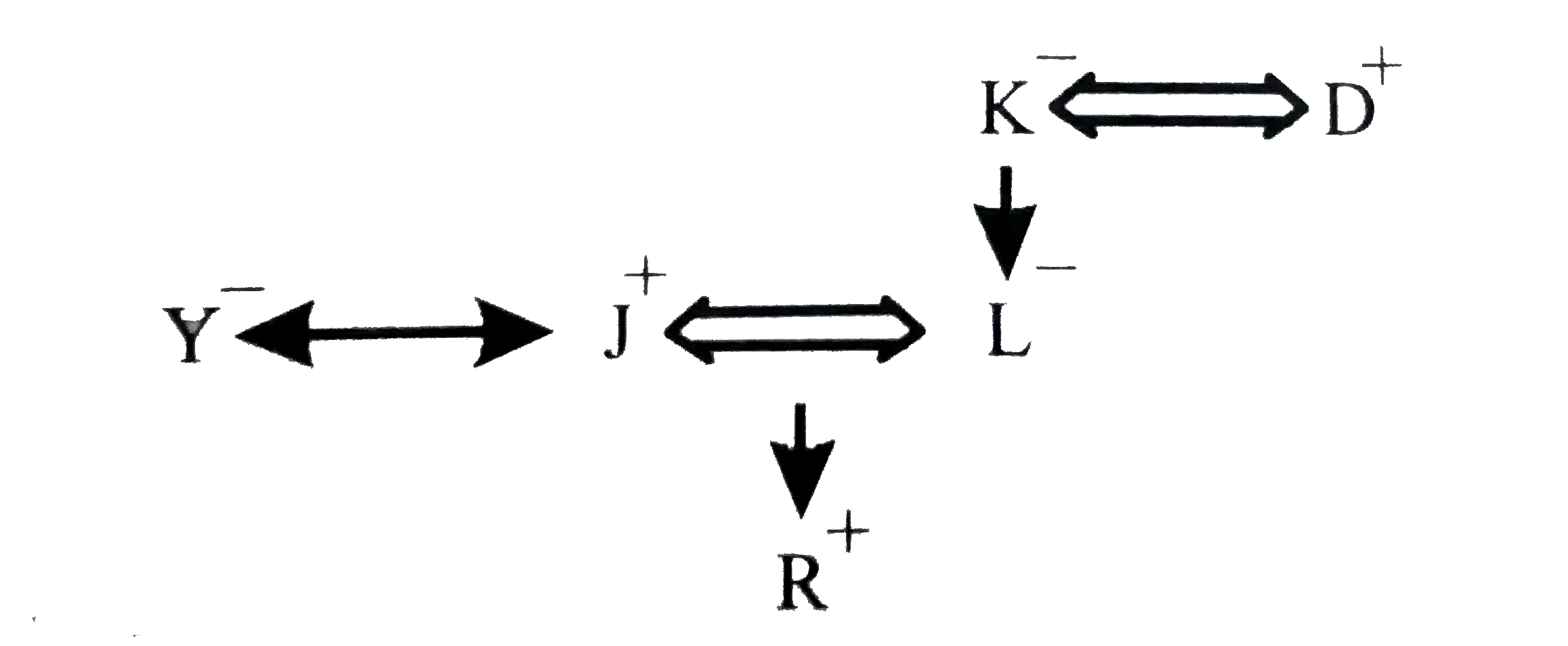 Clearly, J is the son-in-law of K. |
|
| 629. |
WIT BAR URN ELF TOP(The new word formed after performing the mentioned operations may or may not necessarily be meaningful English words )If the given words are arranged in the order as they would appear in a dictionary from left to right, which of the following will be fourth from the left ? |
Answer» Solution :
|
|
| 630. |
WIT BAR URN ELF TOP (The new word formed after performing the mentioned operations may or may not nesessarily be meaningful english words ) If the each alphabet in each of the words is changed to the next alphabet in the English alphabetical order, how many words having two vowels (same or different vowels) will be formed |
Answer» SOLUTION :
|
|
| 631. |
WIT BAR URN ELF TOP (The new word formed after performing the mentioned operations may or may not nesessarily be meaningful english words ) If in each of the given words, each of the consonants is changed to previous letter and each vowel is changed to next letter in the English alphabetical series, in how many words thus formed will no vowels appear ? |
Answer» SOLUTION :
|
|
| 632. |
WIT BAR URN ELF TOP (The new word formed after performing the mentioned operations may or may not nesessarily be meaningful english words ) How many letters are there in the English alphabetical series between second letter of the word which is second from the right and the third letter of the word which is third from the left of the given words? |
| Answer» SOLUTION :Only one LETTER | |
| 633. |
WIT BAR URN ELF TOP (The new word formed after performing the mentioned operations may or may not nesessarily be meaningful english words ) If in each of the words, all the alphabets are arranged in English alphabetical order within the word, how many words will not begin with a vowel? |
Answer» SOLUTION :After ARRANGING
|
|
| 634. |
Statements : Many school buses fitted CNG kit without observing the safety guidelines properly. This results into some instances of these buses catching fire due to short circuit and endangering the lives of the school children. Course of action I. The regional transport authority should immediately carry out checks of all the school buses fitted with CNG kit. II. The management of all the schools should stop hiring buses fitted with CNG kit. III. The government should issue a notification banning school buses for use of CNG kit. |
|
Answer» Only I follows |
|
| 635. |
Statements: No bookis liberary. Some books are diaries Conclusions: I. At least some libraries are diaries II. No diary is library. |
|
Answer» If only CONCLUSION I follows 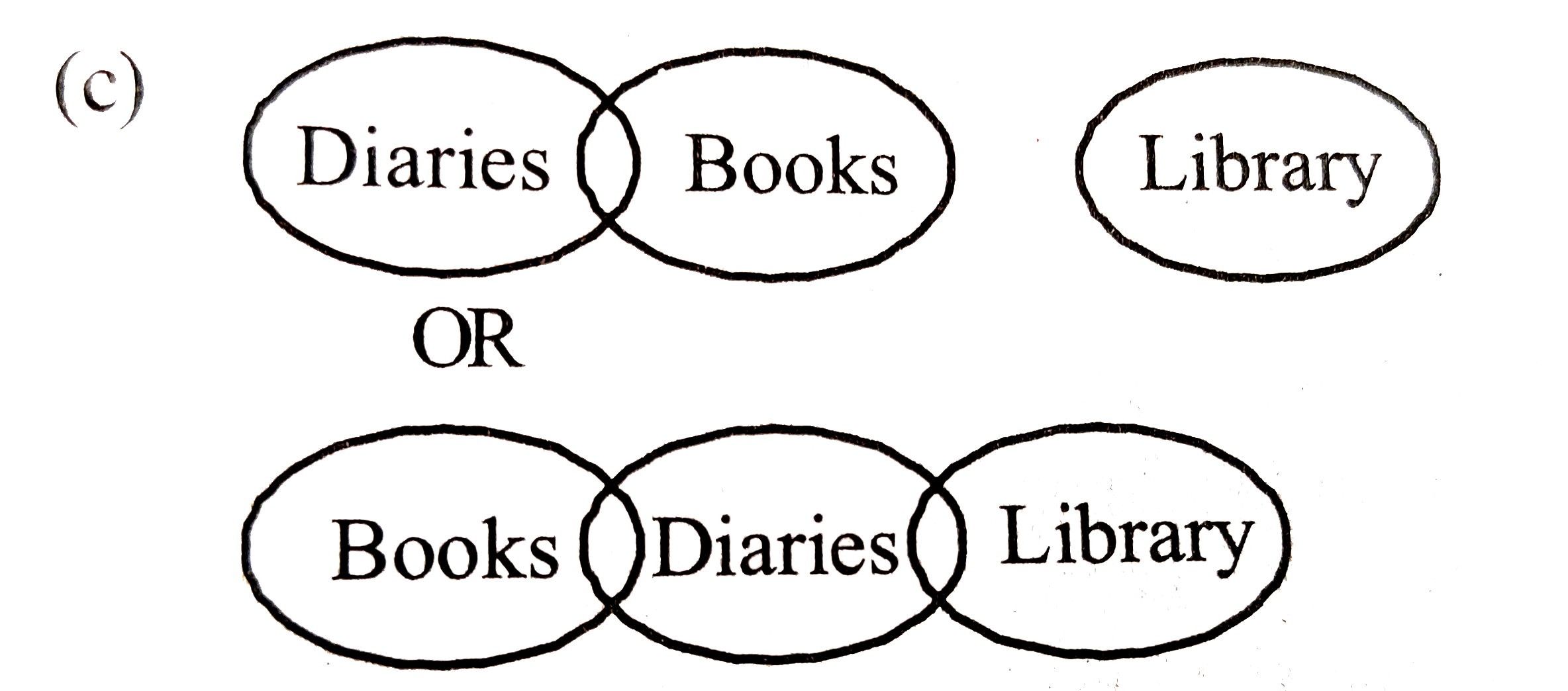
|
|
| 636. |
Statements: Some cartoonsare boys All boys are window All jokers are window I: I. All jokers are boys II. Some cartoons are windows III. Some jokers are cartoons |
|
Answer» Only I follows  CONCLUSION I. FALSE II. True III. False So, only conclusion II follow |
|
| 637. |
The govt. has appealed to all citizens to use potable water judiciously as there is an acute shortage m supply. Excessive use may lead to huge scarcity in future months. Which of the assumptions is implicit in the above statement? (An assumption is something supposed or taken for granted) |
|
Answer» People may ignore the appeal and contmue USMG water as per their consideration. |
|
| 638. |
P@Q means P is less than Q. P@Q means P is greater than Q. P@Q means P is greater than or equal to Q. P=Q means P is equal to Q. P@Q means P is either smaller than or equal to Q. Now in each of the following questions, assuming the given statements to be true, find which of the two conclusions I and II given blow them is/are definitely true? Give answer. Statements: K@T, S=K,T (c)R Conclusions I. S@R II. T=R |
|
Answer» if only CONCLUSION I is TRUE. neiteher RELATIONSHIP `S gtR` nor T=R can be estabilished. |
|
| 639. |
P©Q means P is less than Q. P@Q means P is greater than Q. P@Q means P is greater than or equal to Q. P=Q means P is equal to Q. P©Q means P is either smaller than or equal to Q. Now in each of the following questions, assuming the given statements to be true, find which of the two conclusions I and II given blow them is/are definitely true? Give answer. Statements: U=M,P @U, M @B Conclusions: I.P=B II. P@B |
|
Answer» if only conclusion I is TRUE. COMBINING, we get `P geU=MgeBimpliesPgeB` `impliesP=Bor PGT B` |
|
| 640. |
Town D is towards East of town F. Town B is towards North of town D. Town H is towards South of town B . Towards which directionis town H from town F ? |
|
Answer» East 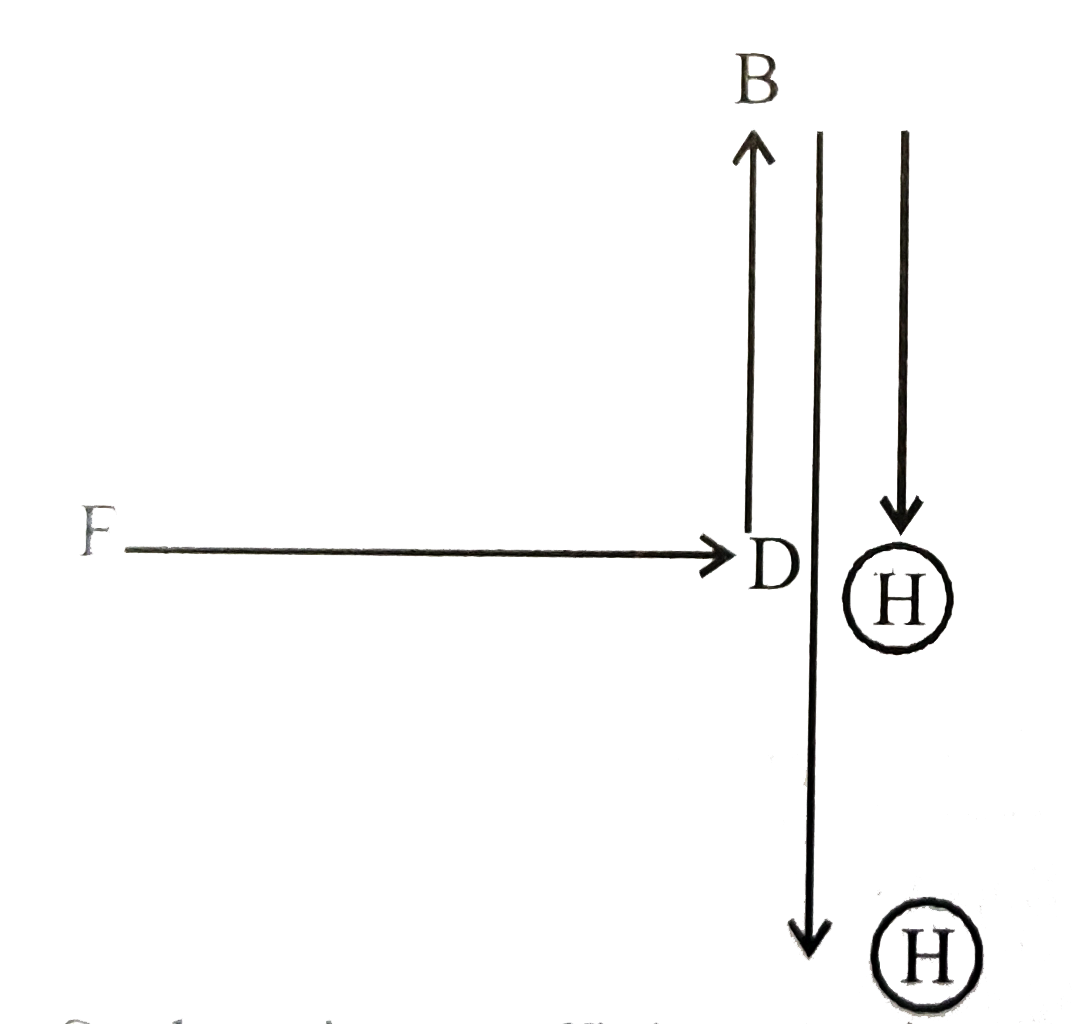 So there is no sufficient data to DETERMINE the direction of TOWN H. |
|
| 641. |
The govt. has appealed to all citizens to use potable water judiciously as there is an acute shortage in supply. Excessive use may lead to huge scarcity in future months. Which of the assumptions is implicit in the above statement? (An assumption is something supposed or taken for granted) |
|
Answer» People may ignore the appeal and continue using WATER as PER their consideration |
|
| 642. |
'P#Q' means 'Pis the daughter of Q'. 'P©Q' mean 'Q is the brother of P'. 'P=Q' means 'Q is the sister of P'. 'P&Q' means 'P is the son of Q ' . 'P*Q' mean 'P is the father of Q' 'P@Q' means 'P is the mother of Q'. Which of the following can be the correct conclusion drawn from the expression 'L=M#N©P*Q' ? |
|
Answer» Q is the GRANDSON of M |
|
| 643. |
'P#Q' means 'Pis the daughter of Q'.'P©Q' mean 'Q is the brother of P'.'P=Q' means 'Q is the sister of P'.'P&Q' means 'P is the son of Q ' .'P*Q' mean 'P is the father of Q''P@Q means 'P is the mother of Q'.In the expression 'P@R=S&V' , Which of the following option is incorrect ? |
|
Answer» <P>V is the husband of P |
|
| 644. |
'P#Q' means 'Pis the daughter of Q'. 'P©Q' mean 'Q is the brother of P'. 'P=Q' means 'Q is the sister of P'. 'P&Q' means 'P is the son of Q ' . 'P*Q' mean 'P is the father of Q' 'P@Q' means 'P is the mother of Q'. Which of the following indicates that 'C is the paternal uncle of D'? |
| Answer» Answer :C | |
| 645. |
Statement: Democracy in the sense of majority rule is not what people are seeking. The middle classes in the Ukraine, . Bosnia Thailand and Venezuela are demanding greater accountlbility, and are challenging regimes seen as corrupt, out of touch and which form obstacles to a better future. Which of the following assumptions is implicit in the above statement? (Anassumption is something supposeor taken forgranted). |
|
Answer» The midldle calasses want a governmentthatis ACCOUNTABLE,responsibleand effective in moving their country further into the modern world. |
|
| 646. |
A*B meansA is the siste of B A div B means A is the brother of B A+B means A is the father of B A-B means A is the mother of B What is the relation between Q and S in 'P +Q div R -S' |
|
Answer» Q is the AUNT of S 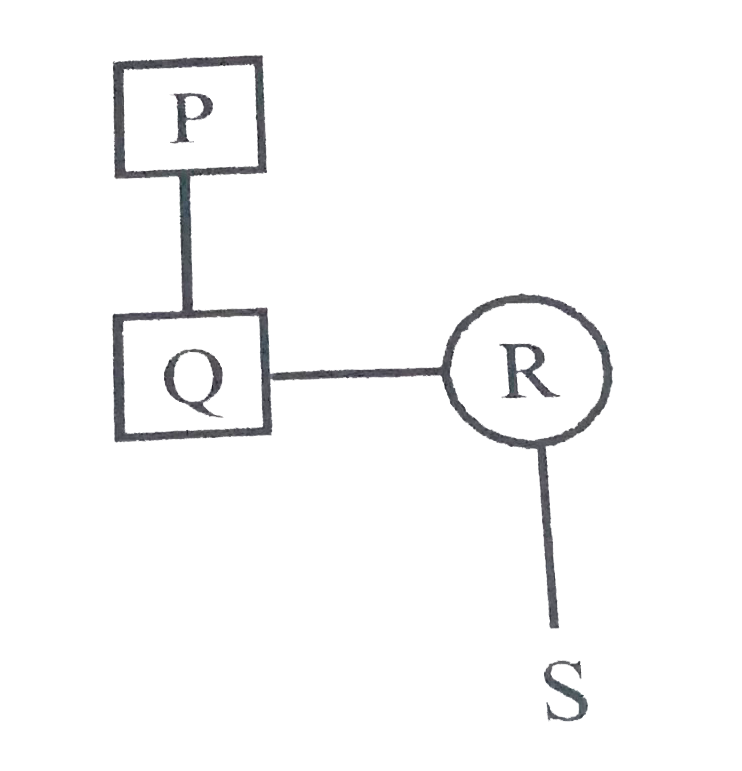
|
|
| 647. |
A*B meansA is the siste of B A div B means A is the brother of B A+B means A is the father of B A-B means A is the mother of B What is the relation between T and Q in 'P**Q div R +S**T' |
|
Answer» T is the NIECE of Q 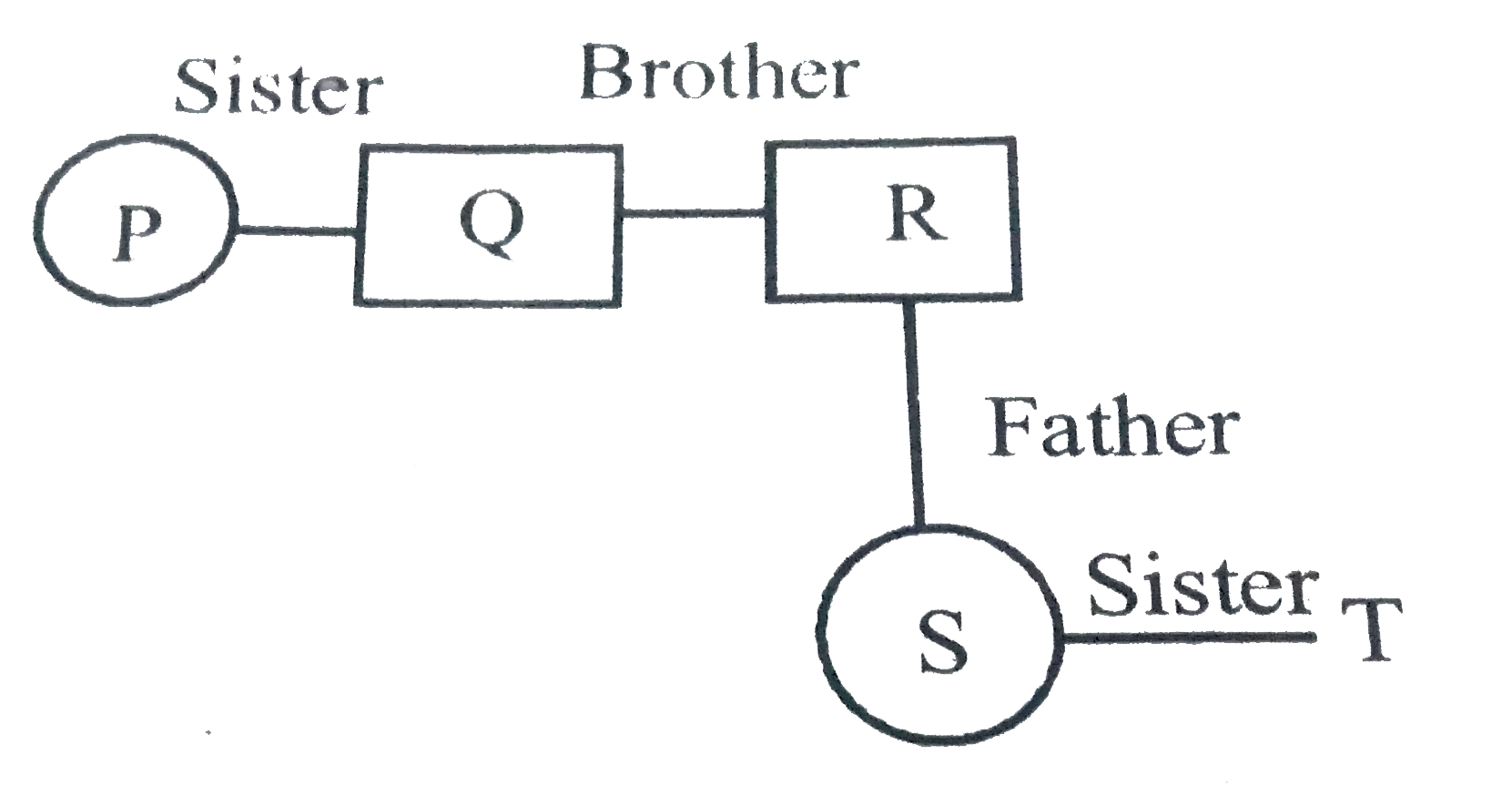
|
|
| 648. |
Statements: All forces are energies. All energies are powers. No power of heat. Conclusions: I. No energy is heat Some forces being heat is a possibility. |
|
Answer» If only CONCLUSION I follows 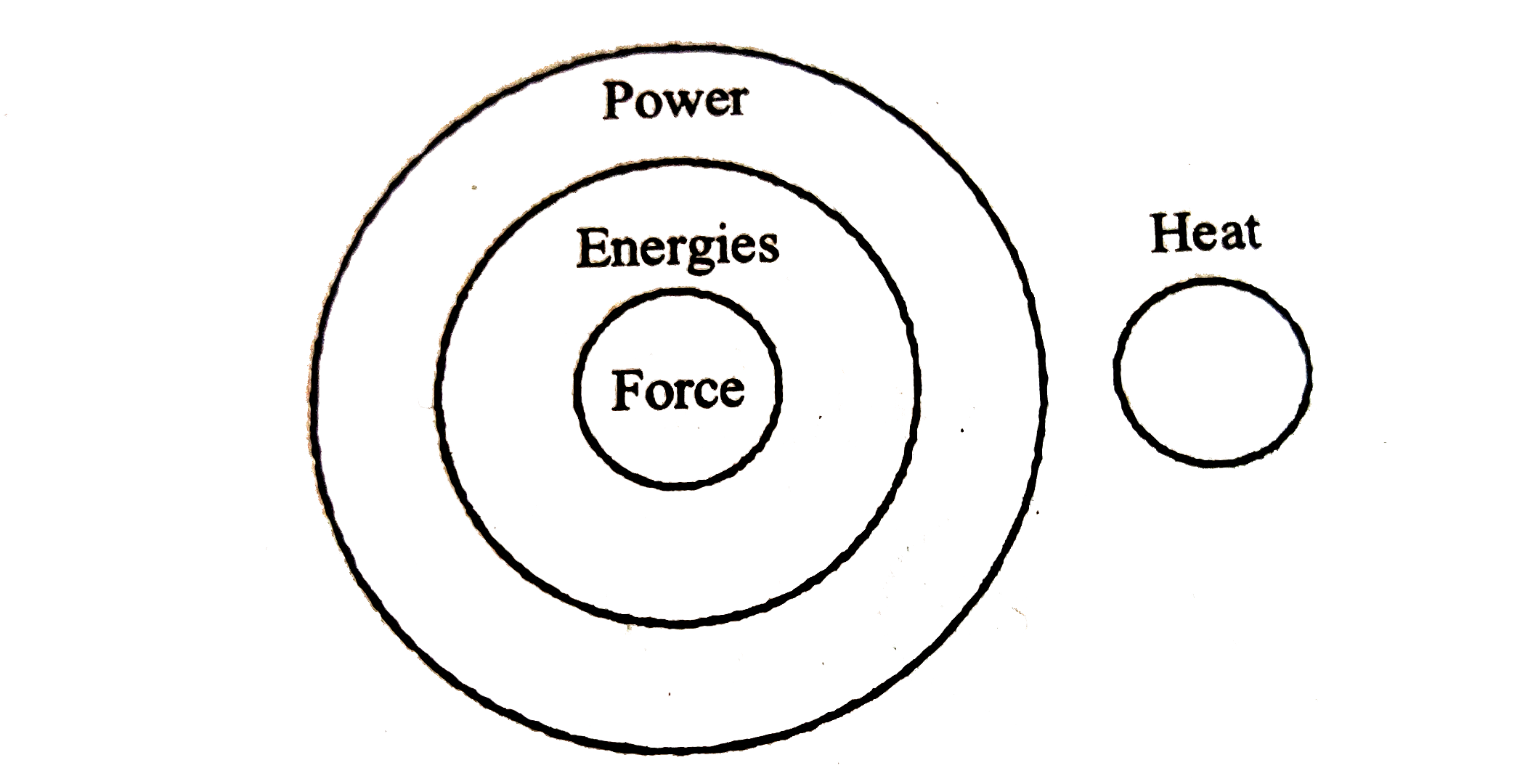 Conclusion I : TRUE II : False |
|
| 649. |
Find the number of boys and number of girls in the row ? A sits 18^(th) from left end of the row and Y sits 11^(th) from the right end of the row. A and Y interchange their positions, after interchanging the position A's position is 20^(th) from left end II. Total 43 student are in the row and all are facing is same direction. |
|
Answer» If the data in statement I and II TOGETHER are SUFFICIENT to ANSWER the question, while the data in statement III are not required to answer the question. |
|
| 650. |
519 328 746 495 837 If the positions of the first and the third digits in each of the numbers are interchanged, which of the following will be the second_ digit of the lowest number? |
|
Answer» 1 |
|
